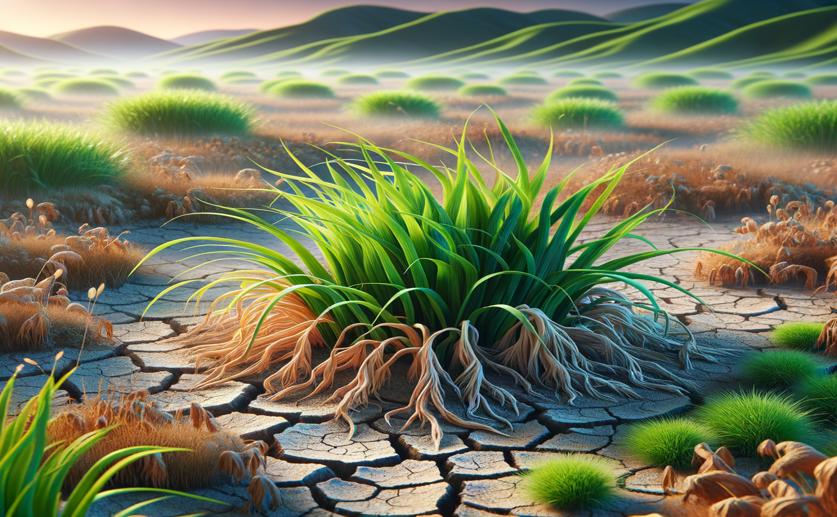
Drought Impact on Bermuda Grass Growth and Gene Activity
Greg Howard
5th April, 2024

Image Source: Natural Science News, 2024
Key Findings
- Researchers at Yangzhou University found some bermudagrass genotypes resist drought better
- Genotypes "Tianshui" and "Linxiang" showed strong drought tolerance by expressing specific genes
- These genes help protect plant cells and maintain water balance, aiding survival in dry conditions
References
Main Study
1) Assessment of the changes in growth, photosynthetic traits and gene expression in Cynodon dactylon against drought stress
Published 2nd April, 2024
https://doi.org/10.1186/s12870-024-04896-x
Related Studies
2) The physiology of plant responses to drought.
3) Silicon-induced postponement of leaf senescence is accompanied by modulation of antioxidative defense and ion homeostasis in mustard (Brassica juncea) seedlings exposed to salinity and drought stress.
4) Comparative proteomic responses of two bermudagrass (Cynodon dactylon (L). Pers.) varieties contrasting in drought stress resistance.
5) Comparative proteomic and metabolomic analyses reveal mechanisms of improved cold stress tolerance in bermudagrass (Cynodon dactylon (L.) Pers.) by exogenous calcium.



 6th March, 2024 | Jenn Hoskins
6th March, 2024 | Jenn Hoskins